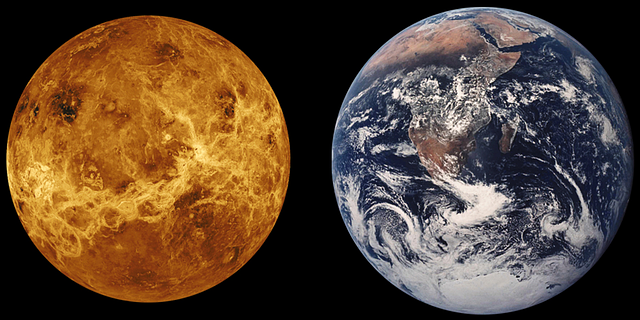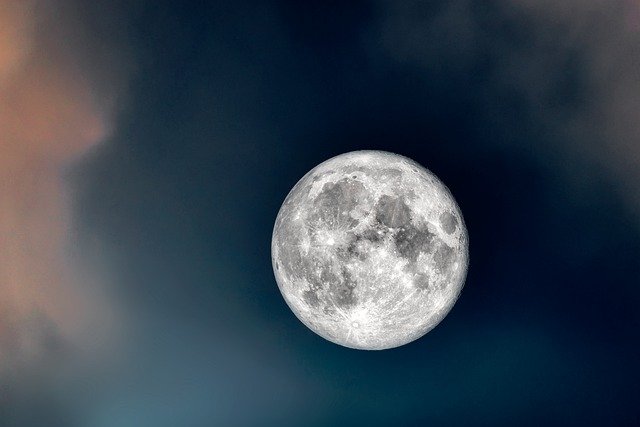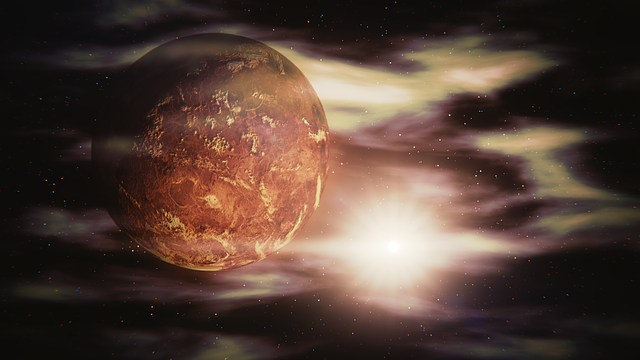*This post may contain affiliate links. This means we may make a commission if you purchase an item using one of our links*
When a celestial body is tidally locked to another, the time it takes to rotate around that other body is equal to the time it takes to rotate once upon its own axis. In other words, a day and an entire year are equal in length.
This phenomenon is caused by gravitational forces. A good example of this is the moon and Earth. The moon is tidally locked to the Earth, and the fact that it spins upon its own axis at the same rate it orbits the Earth explains why we always see the exact same side of the moon in the sky no matter when we look.
Venus, on the other hand, is not tidally locked to any other celestial body because it does not have a moon to tidally lock to. The process of locking itself to the Sun overtime will not be possible either as it would take billions of years, which is unlikely to happen considering the inevitable explosion of the star.
Will Venus Ever Become Tidally Locked?
Table of Contents
There is actually no sure answer to this question. However, the current consensus is that it is unlikely Venus will end up tidally locked to another body.
This consensus is based on scientific research that seeks to model the past, present, and future behavior of Venus, finding it unlikely that it will end up tidally locked. In fact, there are four simulated possibilities of the final state of Venus and they do not indicate tidal locking with another body.
Of course, this is a tentative answer based on current knowledge/modeling, and no one is certain what the future holds for our solar system for all of time!
Is Venus Tidally Locked To The Sun?
Venus is not tidally locked to the Sun. Of course, like the Jupiter, Earth, Mercury, Saturn, Mars, Uranus and Neptune in our solar system, Venus is influenced by the Sun’s forces.
Venus is kept in orbit due to the gravitational pull of the Sun. However, this is distinct from tidal locking, which requires that the locked object rotate both around its axis and the body to which it is locked to at the same rate.
Venus rotates around the Sun in around 225 days (measured in Earth days), but around its own axis in around 243 days, thus failing to meet the rotational requirement for a tidally locked object. Some believe Mercury is locked to the Sun too however, much like Venus their orbital resonances are not in sync
It is also important to note that there are multiple factors that influence whether a body will tidally lock to another, including but not limited to factors such as the distance between bodies, the mass of bodies, and the gravitational constant.
There is even a mathematical formula to calculate the amount of time needed for one body to tidally lock to another.
In other words, one body (Sun) pulling in another body (Venus) to its orbit is not sufficient to induce tidal locking on its own.
Could Venus Ever Tidally Lock To Earth?

The best answer is probably not. This is because of something called orbital resonance.
Orbital resonance is a term that describes how bodies in orbit can sometimes influence one another gravitationally. It does not appear that Venus and Earth have such a relation to each other. It is thought that their seeming resonance is merely coincidental.
If Venus and Earth are not gravitationally influencing each other at a significant enough level to have an effect, and there must be such an influence for tidal locking to occur, it seems very unlikely that Venus will end up tidally locked to Earth or vice versa.
Does Not Having A Moon Stop Venus From Tidally Locking?

In the sense that the absence of a moon in Venus’ orbit means it cannot have an tidally locked moon, the lack of the moon does prevent tidal locking.
Consider that all the moons in our solar system that have sufficient mass to have a round shape are tidally locked to their respective planets. It is reasonable, therefore, to suspect that if Venus had a round moon in its orbit, said moon would become tidally locked to Venus.
Of course, the presence of a moon would not make Venus tidally lock to the Sun or Earth, as it is not the moon’s presence that controls the overall behavior of our solar system’s planets. Instead, moons are influenced by and influence their planets and surrounding areas via various forces.
Summary
Tidal locking is essentially a phenomenon in which the locked object’s rotation slows to the point that its day and year are the same length. Venus is not tidally locked to any other body in our solar system.
It does not seem likely that Venus will end up tidally locked, either, and this holds true in relation to Venus potentially locking to both the Earth and the Sun.
In our solar system, we commonly observe that moons are tidally locked to the planets they orbit, if the moons are large enough in size to take on a round shape. Venus, however, does not have any moons in its orbit, further explaining why it is not tidally locked to another celestial body and no other body is tidally locked to it.
If Venus had a moon, it is likely that moon would tidally lock to Venus eventually.
It is important to note that tidal locking is not an instantaneous process and estimates of how long it will take one body to tidally lock to another can be approximated using a formula that takes several factors into account.
In sum, it is understandable that Venus is not tidally locked, in part due to the absence of a moon in its orbit, but also because of our current knowledge of its rotation (both on its axis and around the Sun) and how this behavior relates to possible tidal locking.
References
Exoplanets could avoid ‘tidal locking’ if they have atmospheres
https://paperzz.com/doc/8104333/long-term-evolution-of-the-spin-of-venus—i.-theory.
https://arxiv.org/pdf/0808.1071.pdf
https://arxiv.org/pdf/1611.05678.pdf
https://agupubs.onlinelibrary.wiley.com/doi/pdf/10.1029/2003JE002190
https://en.wikipedia.org/wiki/Orbital_resonance
https://www.scholastic.com/teachers/articles/teaching-content/solar-system/#:~:text=The sun’s gravity pulls the,solar system orbit around it.

